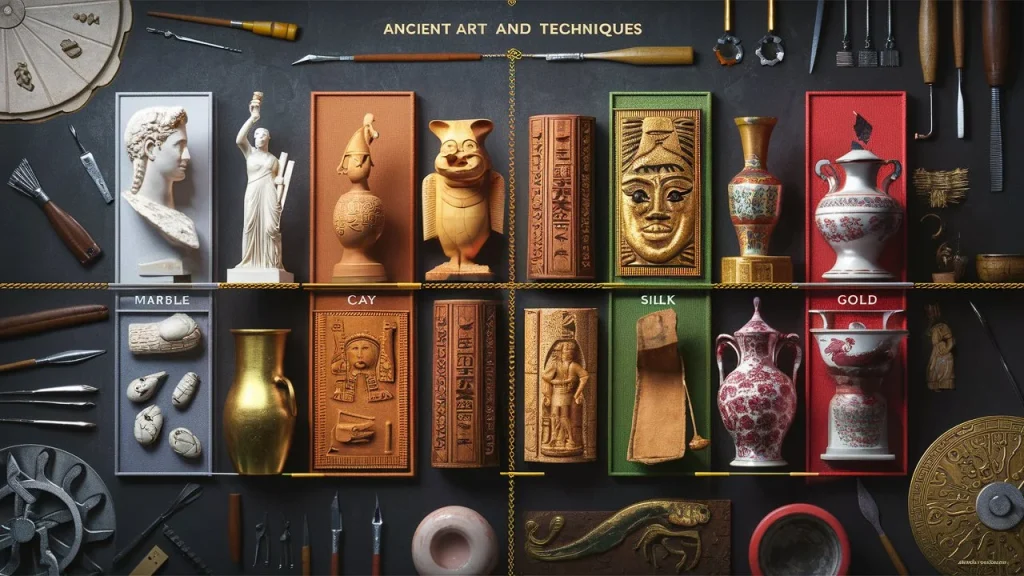Introduction to Ancient Art
Step into a world where there are no limits to human imagination and stories are carved in rocks, earthenware, and painter’s canvases. Ancient Artz gives us a glimpse of the genius minds of long-forgotten civilizations. Masterpieces such as intricate sculptures and vivid frescoes not only represent the beauty of their time but also carry deep cultural narratives that still resonate with us today.
Just imagine you staring at an art crafted thousands of years ago that has outlived ages and still evokes admiration. Every brushstroke or chip tells stories about love, war, spirituality, and daily life. The charm is found not just in their attractiveness but also in what they signify with respect to our ancestors’ beliefs and values.
This enlightening journey through ancient artistry is one of its kind; it will help you understand its past, modern society’s impact on this field, as well as popular pieces that touch hearts worldwide, among other things. Be ready to know how these eternal works connect all of us across generations!
Table of Contents
Historical Overview of Ancient Artz
Ancient Artz has been around for centuries, appearing in many different cultures all over the world. Each civilization expressed itself through pottery, sculpture, and painting, amongst others.
Egyptians made giant stone carvings covered with intricate hieroglyphics that represented their artistry. Egyptian art was highly spiritual and connected with the experience of death, while Greek art emphasized beauty and reality, starting from simple geometrical patterns to naturalistic sculptures celebrating human figures.
In Asia, dynasties produced extraordinarily detailed silk paintings and philosophical ceramics, among many others. Chinese landscapes are filled with bright colors that narrate the harmony of nature.
Throughout the Americas, indigenous people created remarkably beautiful textiles along with ceremonial masks, which held cultural importance for them. Each piece reflects a belief system, values, or way of life that is now long gone.
These traditional manifestations continue inspiring artists today by connecting present creativity with past societies in fascinating ways.
The Impact of Ancient Art on Modern Society
Ancient art has profoundly embedded itself in modern society. Its visible influence is seen in architecture, fashion, and even contemporary digital design. Many artists today draw inspiration from ancient techniques and motifs that give their work a timeless quality.
Education centers are maintained by museums that display the art of ancient times. This practice not only stores history but also promotes creativity among upcoming artists. The stories behind these works create curiosity about cultural heritage.
Above all, tourism is an important arena in which old art plays a part. Every year, millions flock to historically rich sites, thus boosting local economies and fostering global ties.
Social movements have also embraced symbols derived from ancient civilizations. These images elicit strong emotions and help people connect around shared beliefs or purposes. Thus, the impact of Ancient Artz still runs deep into our ever-changing world.
Top 5 Most Famous Ancient Art Pieces

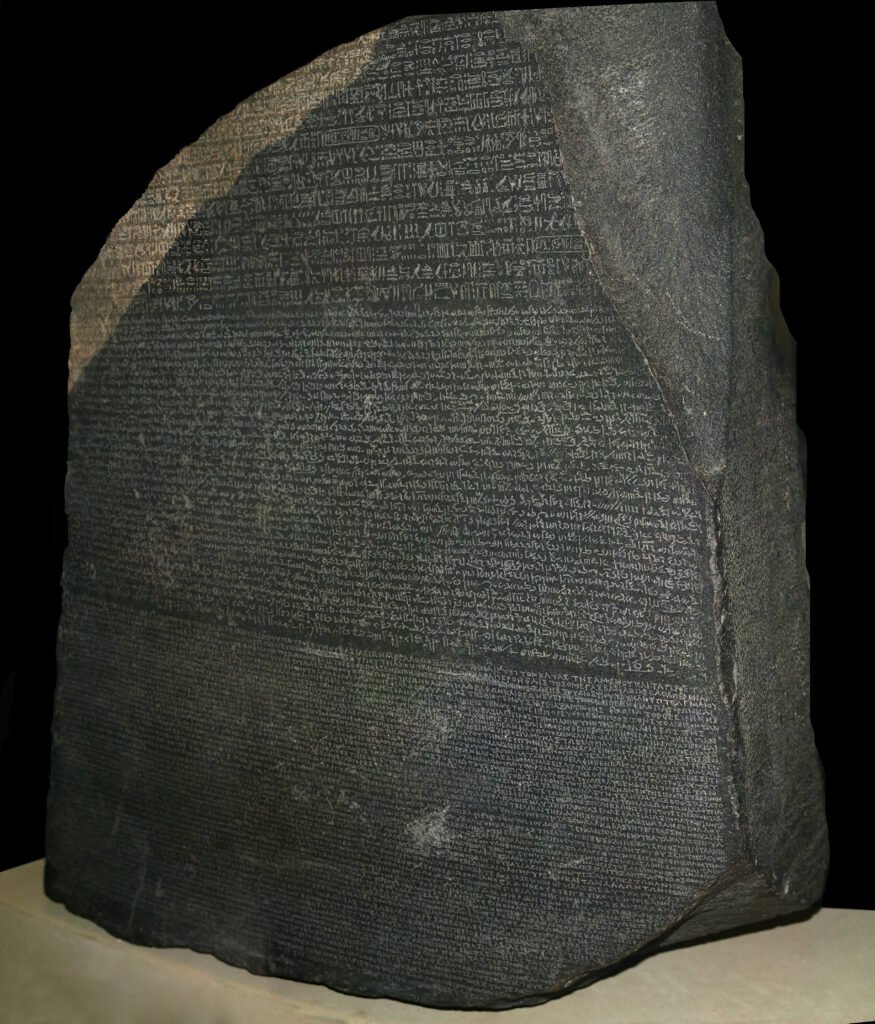
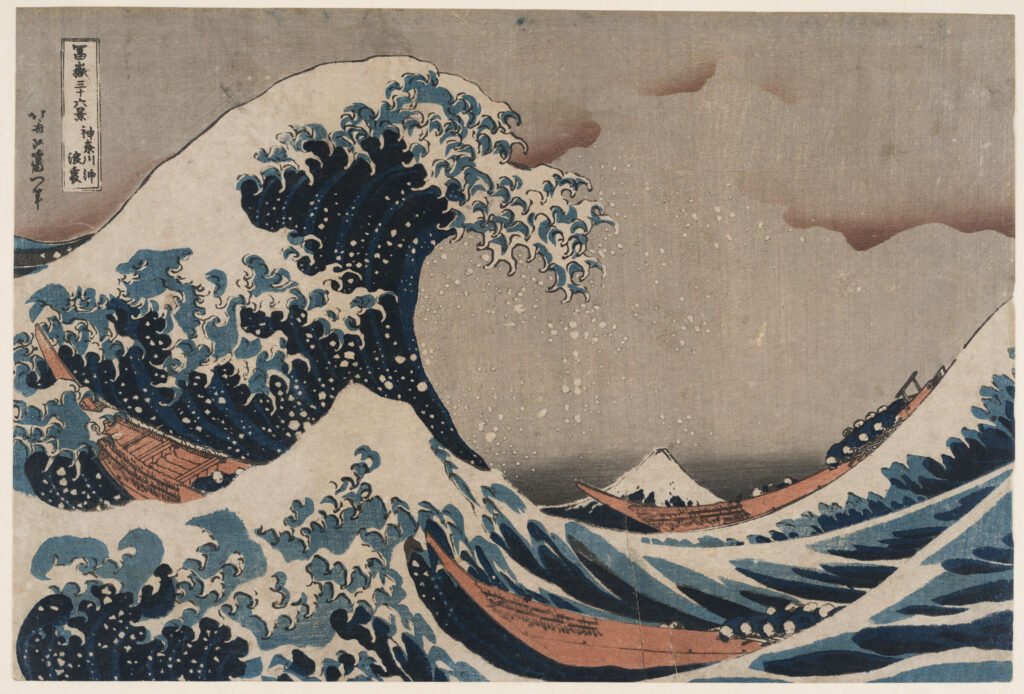
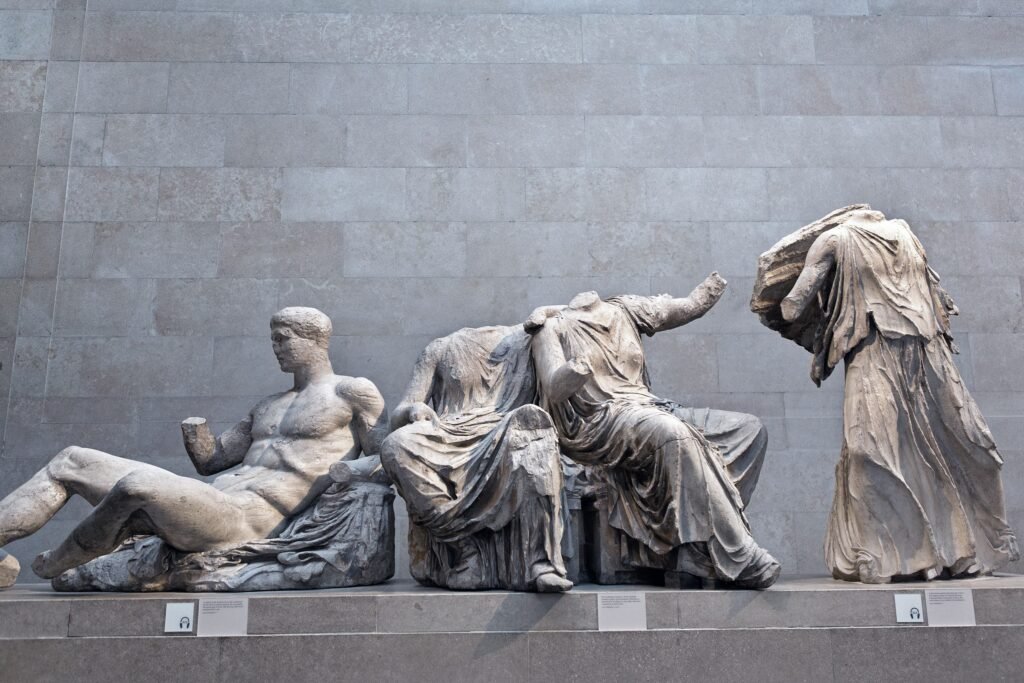

Ancient Artz is home to some of the most famous art pieces worldwide, whose stories remain relevant throughout generations.
Venus of Willendorf, on the other hand, is a figure that represents fertility. This small statue from about 28,000–25,000 BCE epitomizes ancient womanhood by its exaggerated characteristics.
Rosetta Stone follows. It was found in 1799, and this piece of granodiorite allowed experts to decode or read Egyptian hieroglyphs; it contained everything necessary to know about an entire civilization.
Let us then consider The Parthenon Marbles, these marvelous carvings that once adorned Athens’ Parthenon. They depict Greek myths and demonstrate technical excellence, which continues to mesmerize artist-lovers even today.
And another big one is “The Great Wave off Kanagawa” by Hokusai. This work from 1831 represents Japanese woodblock printing – simple yet beautiful – continuing to shape artists all over the world.
Our collection also has head gear made of gold belonging to King Tutankhamun. This amazing treasure discovered in 1922 epitomizes both luxury and artistic skills shown during Egypt’s New Kingdom period.
The Techniques and Materials Used in Ancient Art
Ancient artisans employed a wide variety of techniques and materials, which mirrored their cultural values and resource availability. Clay, stone, metal, and wood were among the most frequently used materials for different artistic expressions.
Pottery was often marked with intricate designs made using hands or thrown on a wheel. Ceramics, murals, and textiles became more colorful due to paints sourced from natural pigments based on minerals or plants.
Sculptors preferred working with marble or bronze because they were long-lasting. Skills such as carving and casting characterized these works of art.
Fresco painting involved painstakingly putting layers on wet plaster. The process lets colors bond with surfaces over time to produce beautiful wall drawings that remain sought after to date.
Textiles had woven patterns passed down through generations. These fabrics served practical purposes, but they also depicted narratives that were central to ancient cultures. Each technique tells a story hidden deep within these ageless masterpieces.
Controversies and Mysteries Surrounding Ancient Art
This is an art form that has intrigued scholars and fans worldwide by its mysterious nature. Some pieces have no clear origins, making historians wonder who made them or why.
For example, there are the enigmatic Nazca Lines found in Peru whose purpose is not known. Were they astronomical calendars or sacred pathways? The debate continues.
The other case concerns Elgin Marbles, held in the British Museum but originally owned by Greece’s Parthenon. The issue of ownership raises heated debates about cultural heritage as well as repatriation efforts.
Further still, some ancient artifacts display an unusual level of expertise that confounds our understanding of past capabilities. How would people without modern technology manage such complex structures?
These controversies deepen our appreciation for ancient art, transforming it into something beyond objects that serve as symbols of human complexity and accomplishment. Every object keeps stories waiting to be uncovered, making them even more fascinating than before.
The Preservation and Restoration of Ancient Art
The preservation and restoration of ancient art are important for safeguarding our cultural heritage. These works of genius tell tales from ancient times, linking us to lost civilizations.
To preserve these items, professionals use different techniques. They evaluate constituent materials like clay or pigments that tend to wear away with time. Measures such as using fine tools to clean them and coating them to protect their longevity are taken.
Restoration is a subtle process. It often takes painstaking efforts by art conservators who strive to repair damages while keeping originality intact. This calls for both expertise and understanding of historical periods.
At times, there have been debates concerning restoration strategies. Is it necessary to completely restore an item? Must its wear be preserved? Every decision made influences how future generations will relate to this ancient artwork.
Worldwide institutions invest in educators specializing in conservation studies only. Their commitment helps keep these treasures safe while allowing them to be displayed in public for years ahead.
Visiting Ancient Art Collections
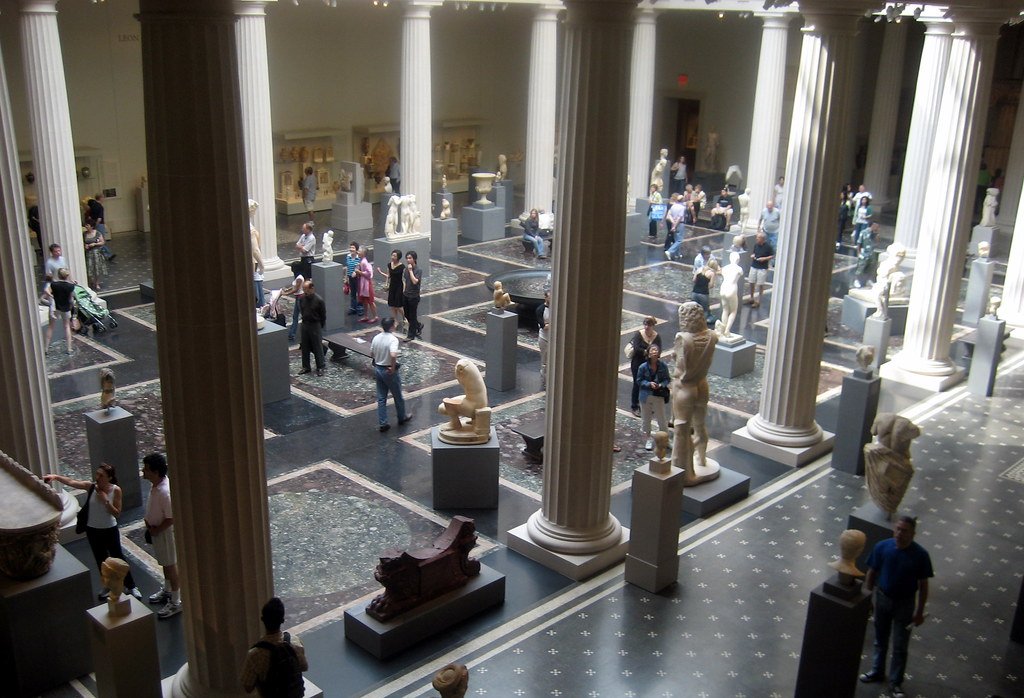
Ancient art collections offer a rare glimpse into shared human history. There are museums across the globe containing amazing pieces that speak about civilizations long gone.
As you stroll through the corridors, you can feel the burden of time on your shoulders. Each piece arrests moments caught between clay, stone, or metal bodies. You may start wondering what these creators saw when they looked around themselves.
Make sure to visit interactive exhibits because they allow deeper connections with each masterpiece. Guided tours also provide additional information, which makes people understand better than before and appreciate more deeply.
Moreover, many institutions hold traveling exhibitions that showcase such things as rare artifacts from remote parts of the world. It is through this availability that various cultures which one may not otherwise meet are experienced firsthand.
Also include local galleries, where lesser-known yet equally enthralling exhibits are featured. Interacting with ancient work involves more than just observing; it beckons one to try and understand different stories stitched in time.
Conclusion: Appreciating the Timelessness of Ancient Art
Ancient Artz is more than just a relic from the past. It carries the ideas, values, and feelings of dead civilizations. Every work has its story that brings us to the history we have in common with it, and touching it makes you shudder.
In looking at these artistic creations of eternity, there are hidden meanings that still resonate with many people. The ancient artists’ use of materials and techniques shows how talented they were. Their art reveals not only what was considered beautiful in their time but also provides insights into religious practices and belief systems as well as cultural norms.
The controversies surrounding Ancient Artz add another intriguing layer to this rich tapestry. These matters may involve issues such as queries about who owns what or even whether an object is genuine or not – whatever they are, they require closer engagement with art from antiquity.
Visiting collections housing Ancient Art allows individuals to experience this legacy firsthand. Thus, through museums and galleries across the globe, one can see our progress so far and notice the lasting impact left by those who were gone long before us.
The fascination with Ancient Artz is unlikely to fade anytime soon; it continues to inspire artists, historians, and enthusiasts alike. An understanding of its intricacies alongside adoration for its beauty is an acknowledgment that these masterpieces were created by someone who made them, signifying how art has always been a key document on humanity’s journey through time itself.
